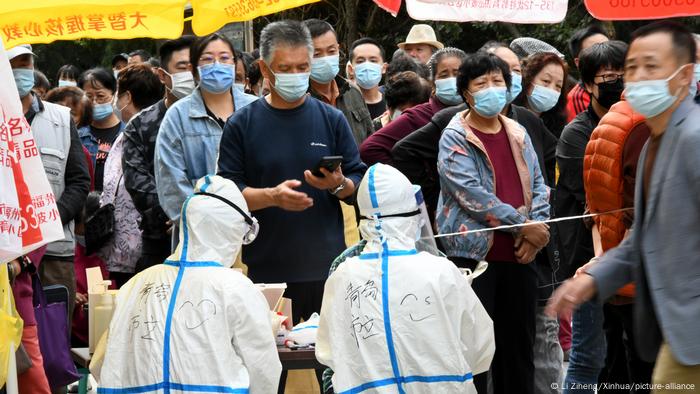Mass testing is designed to identify asymptomatic cases.
Deutsche Welle: What do you see as some of the WHO's greatest strengths and achievements during this pandemic?
Dr. Maria Van Kerkhove: One of the strengths that the WHO has is its international networks and our partners and our collaborators. During this pandemic, we've worked with literally thousands and thousands of scientists all over the world — medical professionals, and academics from so many different technical disciplines that work with us on very specific topics related to personal protective equipment, therapeutics, the development of vaccines, the development of diagnostic tests.
I think one of our strengths, which is not just within this pandemic, but developed over decades, is to bring this group together so rapidly that we can share information — firsthand information, frontline information, patient level information around treatments and care — that's faster than any peer review publication that can be written.
This is really critical in the beginning of a pandemic, epidemic or outbreak when you don't have much information on that particular pathogen, especially if it's new.
Looking back, what things could have been done better? What things do you plan to do better in the next pandemic, whenever and whatever that is?
The easy answer to that is everything can be better, and it should be better. And I think that's something that we all strive for. I think one of the challenges for me in answering that question is trying to think in terms of the decisions that we made based on the information that we had at that time.
I think some of the things that we need to do much better is around supplies and supply chains. We still have a problem with the production of Personal Protection Equipment (PPE), for example, masks, gloves, gowns, goggles, respirators, equipment, ventilators, oxygen supplies.
There was a total market failure, a supply chain failure. And we worked really hard with partners to try to make sure that production capacity increased and that we got the supplies to frontline workers, but it's still not fixed.
I think another area which has been really challenging in this pandemic is communication: communicating uncertainty, communicating what we know at the time, what we don't know at the time and what we're learning or what we're doing to address those unknowns. So, I think that's an area that we need to look into.
Speaking of communication, I want to talk about this New York Times article, and there have been others from both The New York Times and other outlets regarding how long into the pandemic you and others at the WHO were saying transmission of COVID-19 from asymptomatic people was rare. I want to hear your side of that story and how you approached the science.
Since February, the WHO had been talking about the possibility of asymptomatic spread.
source : https://www.dw.com/en/who-covid-expert-lessons-learned-from-a-year-of-covid-19/a-56086656

